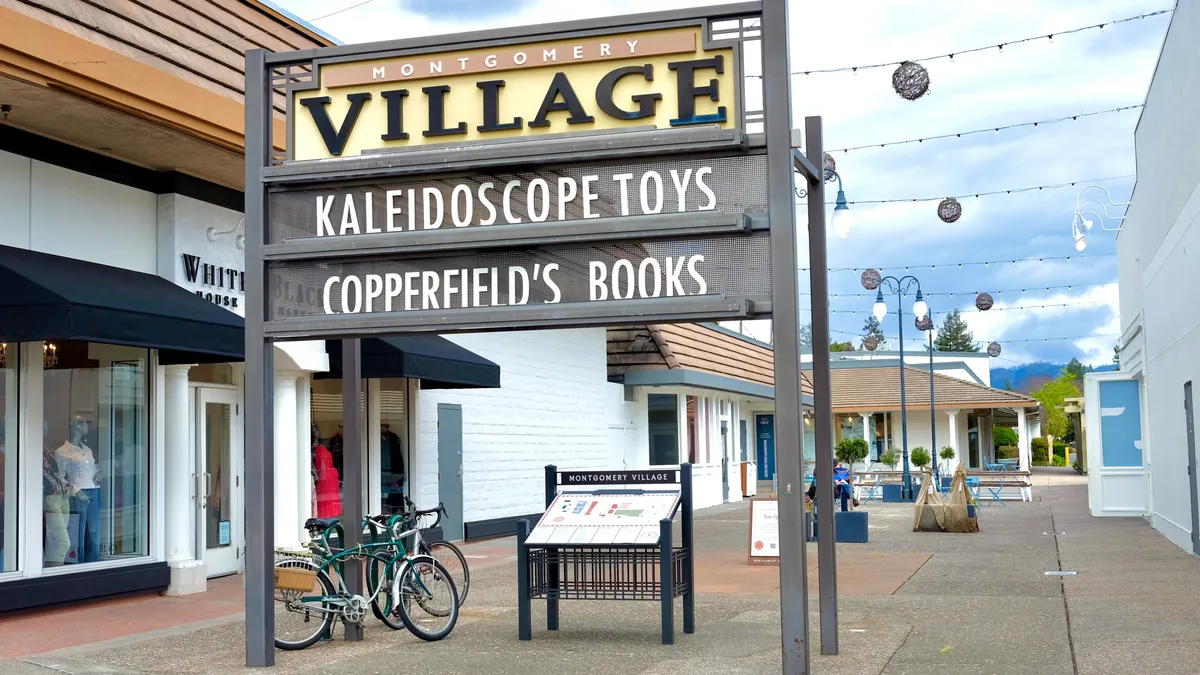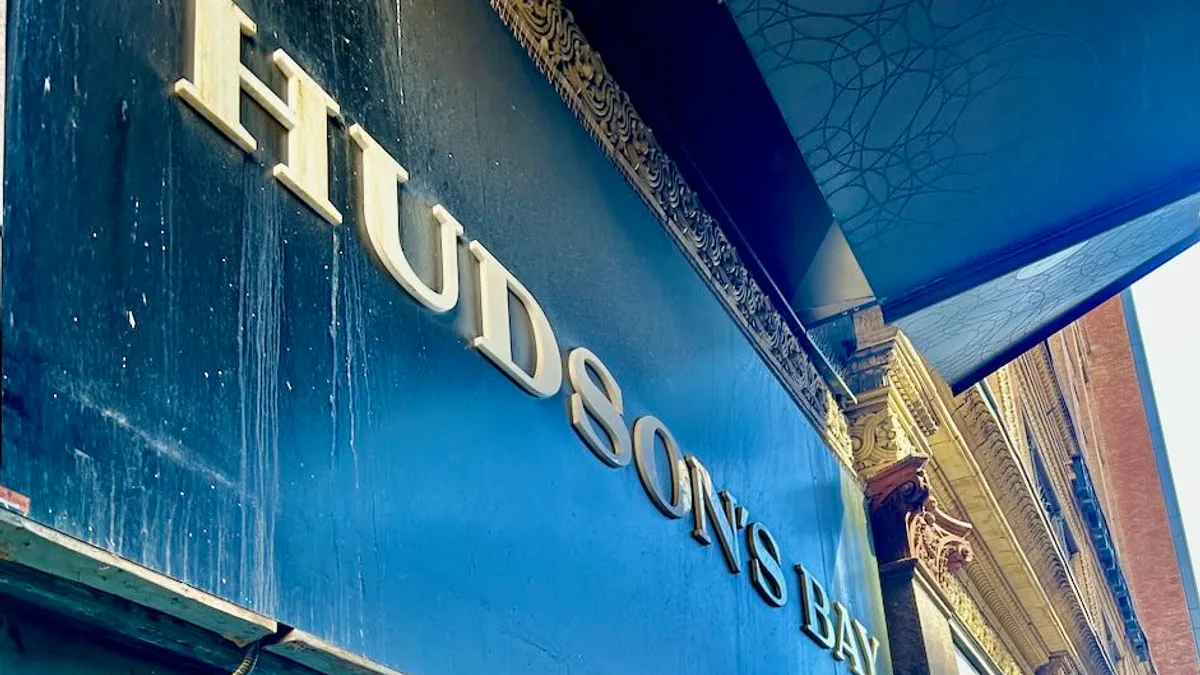SANTA ROSA, Calif. — With a diverse population of about 180,000, surrounded by Sonoma County’s vineyards and farmland, and some of California’s oldest redwood forests, sits Santa Rosa. The North Bay city, always vulnerable to wildfires, was devastated by the Tubbs Fire five years ago, but it has been quickly rebuilding.
That is a testament to its surging growth and relatively new position as a bedroom community to San Francisco, about 60 miles south across the Golden Gate Bridge. But, despite that boom, the fate of its three major malls, like that of many in America, is uncertain.
The Codding connection
The history of the three centers — 40-year-old Santa Rosa Plaza in the middle of town; 61-year-old Coddingtown on the northwest side; and 73-year-old Montgomery Village, nestled in a historic northeast neighborhood — is intertwined. Their connection’s name is “Codding.”
Hugh Codding, who died in 2010 at 92, made his mark on the city, building large swaths of its homes and serving on its city council. In the early part of the 20th century he bought up orchards and other parcels of land with an eye toward residential and commercial development. His first shopping center project, Town and Country, with about a dozen shops, sold before he even finished it, according to his granddaughter Lois Codding.
“It went for what in the 1940s was so much more money than houses did at that time,” she said by phone. “That's when Hugh switched from homes to shopping centers because he realized that he made a whole lot more money.”
In 1950 Codding opened Montgomery Village, one of the first major shopping malls in the U.S. Then, encouraged by Montgomery Village’s success, Codding in 1962 opened another open-air mall, dubbed Coddingtown, on the other side of town.
As enclosed malls gained favor with consumers, Coddingtown added a redwood ceiling in 1979. In 2005, mall REIT Simon Property Group acquired a 50% share, though the Codding family took that back in 2017. Coddingtown is now one of the shopping centers run by Lois Codding and her sister, Lisa, and their real estate firm, Codding Enterprises. The mall is anchored by two original department stores, Macy’s (formerly Emporium Capwell) and J.C. Penney, as well as Target and Nordstrom Rack, and, as always, a grocer. Tenants, a mix of retail, dining and services, include national chains and local businesses.

“Originally Simon had very grand ideas about Coddingtown, but it wasn’t penciling out,” Lois Codding said. “Traditionally, the money made was inside [an enclosed mall], but that has flipped. Simon has a tough road ahead of them, and I’m curious to see how they transform malls moving forward. It’s easier in some regards for a small, private company like Codding Enterprises to make changes, but then also hard because we don’t have the financial leverage of Simon. Our willingness to work with locals and be flexible to them, and of course living in the trade area does give us a benefit that the larger REIT companies don’t have.”
The other Codding connection
The question of how Simon might transform its enclosed centers applies to the city’s third major mall, Santa Rosa Plaza, which the REIT has owned since 1998. The downtown plaza has never been a Codding property, yet it nevertheless has a Codding tie of sorts.
The center opened in 1983, after years of contention fomented by Hugh Codding, first as a member of the city council and then as a real estate mogul. As a councilor, he protested urban renewal plans, which included the demolition of several historic buildings to make way for the mall. Later, he stymied its progress through legal challenges against the rival who was building it. After about a decade of these snarls, though, Santa Rosa Plaza opened its doors.
An enclosed structure with five multilevel parking decks and 693,000 square feet of gross leasable area, the mall is anchored by Macy’s and fast-fashion retailer Forever 21 (the latter part-owned by Simon). Today, many residents view the massive building and its parking infrastructure as an obstacle to the city’s current revitalization efforts.
“It's a fortress that does disrupt traffic and energy throughout the market,” Peter Gerney, founder and principal at market research firm Gerney Research Group, said by phone. “In a place like Santa Rosa that's got a beautiful, warmer climate and people like being outside and they like convenient parking, Santa Rosa Plaza is the toughest one of the three. This is not a swipe at Simon — Montgomery Village and Coddingtown are both suburban, they have parking fields. Montgomery is open air, which helps, and Codding is locally owned, and local people know that.”
Everything old is new again
Of Santa Rosa’s major shopping centers, the best positioned in today’s tricky retail environment is not the downtown plaza, which is the biggest of the three and run by a deep-pocketed REIT. It’s not even the well located, family-run center with convenient parking, anchored by a bustling Whole Foods. Rather, it’s low-key Montgomery Village, the oldest of the bunch, according to Gerney.
“When you look at that market long term, Montgomery Village is going to come out number one, in terms of ultimately being the primary open-air fashion center in that market,” he said. “It's a nice little lifestyle center that's only going to get better.”
That’s thanks in part to Boston-based firm WS Development, which is set to bring needed upgrades and the leasing power that comes from national management, Gerney said.
“We were actually looking at Montgomery Village for many years before the Coddings sold it to us,” WS Development Chief Financial Officer Eric Smookler said by phone. “Our thesis generally — and if you look at our portfolio, you can see this — is that if you can buy or build the right venue in the right spot, and there's not a roof on it, you can create a really nice environment for your customer.”
The open concept is back for a number of reasons, Smookler said. That includes more convenient parking, which is important. But even more enticing is the sense of scale, which allows for pleasant strolling and hanging out. A mix of eateries, services like salons, and special events and programming all bring in different customers at different times of day.
“Open air allows us to do grocery and fitness and nails, and spa and retail. It allows us to do a lot of restaurants with outdoor seating, especially in a California climate,” Smookler said. “It feels like a setting that you want to be at and come back to, and we think the property can be active for 15 or 18 hours a day.”
Above all, Montgomery Village retains fundamental strengths that stem from Hugh Codding’s original vision, he also said.
“It was always positioned on a great road in a great neighborhood, and built to be the downtown for that inner-suburban Santa Rosa customer, which is growing,” he said. “And because of what was built so long ago, because of how interesting it was, we're able to benefit from that as we do our best to make it a special place for the community.”





















